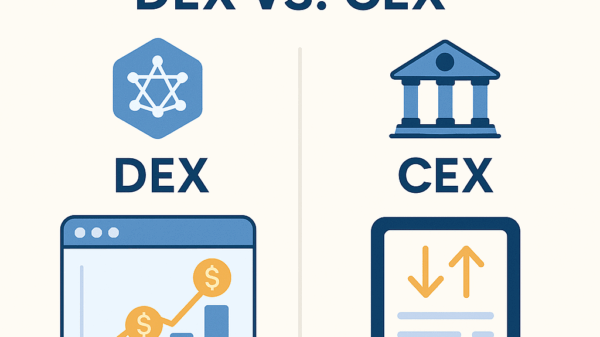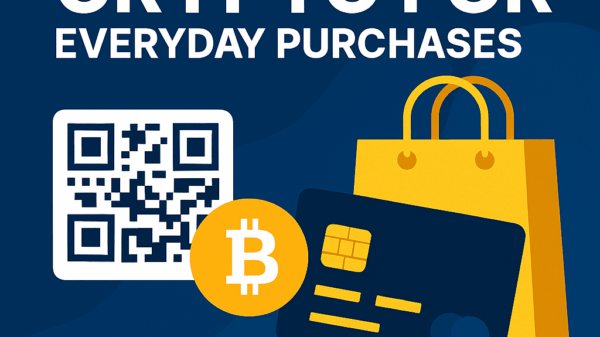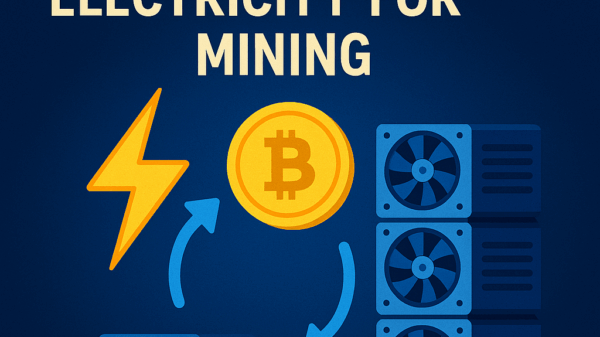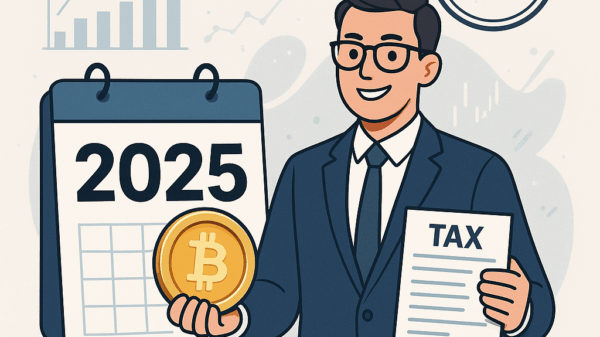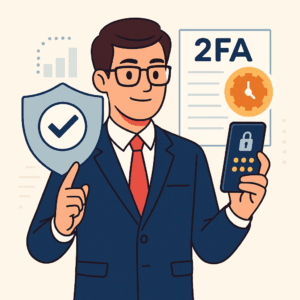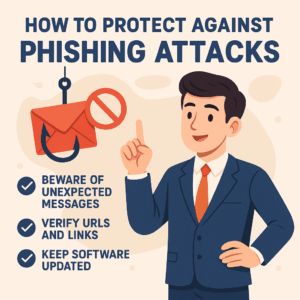How to Recover a Lost Crypto Wallet
By Jason Miller – Crypto Writer 10.expert 🧠 Covering Bitcoin, altcoins, blockchain & Web3.
As a crypto writer and analyst, one of the most terrifying moments for any digital asset holder is the realization that their crypto wallet is “lost.” This isn’t always about a physical device disappearing; it could mean a forgotten password, a corrupted file, a damaged hardware wallet, or even a deleted app. The good news is that in the world of self-custody, “lost” doesn’t necessarily mean “gone forever,” provided you took the single most important security precaution: backing up your seed phrase.
In 2025, with billions of dollars worth of crypto either permanently lost or locked away due to forgotten keys and botched backups, the ability to recover a lost wallet is an essential skill. It underscores the core principle of self-sovereignty in crypto: with great freedom comes great responsibility for managing your own keys. While centralized exchanges might offer some recovery options, for non-custodial wallets, your recovery hinges entirely on that sequence of words.
Let’s dive into how to recover a lost crypto wallet like a seasoned pro, turning a potentially heart-stopping moment into a manageable recovery process.
How to Recover a Lost Crypto Wallet: Your Lifeline to Digital Assets 🌐💪
Losing access to your crypto wallet can be stressful, but if you’ve followed best practices, recovery is often straightforward. Here’s your step-by-step guide.
Don’t Panic – Assess the Situation Calmly 🧘
- Your Funds are on the Blockchain: Remember, your crypto isn’t “in” your wallet. It resides on the blockchain. Your wallet is merely a tool that holds the keys (private keys derived from your seed phrase) to access and control those funds.
- Identify the Loss Type: Is it a lost password, a deleted app, a damaged device, or a forgotten seed phrase? The recovery method depends on this.
The Absolute Prerequisite: Your Seed Phrase (Secret Recovery Phrase) 🔑
- The Master Key: Your 12 or 24-word seed phrase (also known as a mnemonic phrase or recovery phrase) is the ultimate backup. If you have this, you can recover your funds.
- No Seed Phrase, No Crypto (Mostly): Without your seed phrase or private keys, recovering funds from a non-custodial wallet is almost impossible. There’s no “reset password” button in decentralized crypto.
Scenario 1: Lost Password for a Software Wallet 🔐
- If You Have the Seed Phrase: The most common scenario. Simply reinstall the wallet app (if deleted or on a new device), and choose “Restore Wallet” or “Import Wallet.” You will be prompted to enter your seed phrase and then set a new password.
- If You ONLY Forgot the Password (and have the seed phrase): This is typically the same process as above. The password encrypts the local wallet file; the seed phrase recovers the underlying keys.
Scenario 2: Lost/Damaged Hardware Wallet 🔨
- Your Seed Phrase is Key: If your hardware wallet (Ledger, Trezor, etc.) is lost, stolen, or damaged, your funds are safe as long as you have your seed phrase.
- Restore to New Device: Purchase a new hardware wallet (always from the official manufacturer). During the setup process, choose “Restore Wallet” or “Recover Device” and enter your seed phrase. Your funds will appear as the device resyncs with the blockchain.
- Cross-Compatibility: Most reputable hardware wallets use the BIP39 standard, meaning you can often restore your seed phrase on a different brand of hardware wallet if needed.
Scenario 3: Deleted Software Wallet App or Browser Extension 🗑️
- Seed Phrase is the Solution: Similar to a lost password or damaged hardware wallet. Simply re-download the official app/extension and use your seed phrase to restore.
Scenario 4: Compromised Wallet (Hacked) 🚨
- Act Immediately: If you suspect your wallet has been compromised (unauthorized transactions, funds missing), the first step is to move any remaining funds immediately to a new, secure wallet (one with a new seed phrase you’ve generated safely).
- Do NOT Reuse: Never reuse a compromised wallet or its seed phrase. Assume everything associated with it is tainted.
- Report: Report the incident to relevant authorities and any centralized exchanges involved (if funds were moved there).
The Crucial Recovery Steps (Using Your Seed Phrase) ✅
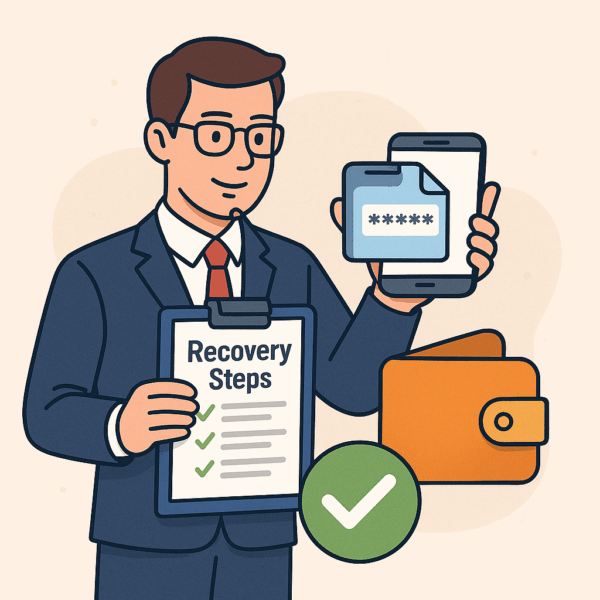
- Step 1: Obtain a Compatible Wallet: Download the official version of the wallet software you were using, or a known compatible wallet that supports BIP39 seed phrases.
- Step 2: Select “Restore” or “Recover”: During setup, choose the option to “Restore an existing wallet” or “Import with Seed Phrase.”
- Step 3: Enter Your Seed Phrase: Carefully enter each word of your 12 or 24-word seed phrase in the correct order. Double-check for typos! A single incorrect word will lead to a failed recovery.
- Step 4: Set New Password/PIN: Create a new, strong password or PIN for this restored wallet.
- Step 5: Sync with Blockchain: The wallet will synchronize with the blockchain, and your balances should appear.
What if You Also Lost Your Seed Phrase? 😢
- Grim Outlook: Without a seed phrase, recovering funds from a non-custodial wallet is exceedingly difficult, often impossible.
- Last Resort Hopes (Very Low Probability):
- Password Manager: Did you (against all best practices) save it in an encrypted password manager?
- Old Computer Backups: Is there an old hard drive, cloud backup (encrypted!), or USB stick that might contain a wallet.dat file (for Bitcoin Core) or a forgotten plain-text seed phrase? This is a long shot and fraught with risk if the backup isn’t secure.
- Data Recovery Specialists: For extremely large sums, some highly specialized (and expensive) data recovery firms claim to be able to recover data from damaged drives where seed phrases might have been stored. Success is not guaranteed, and verification is crucial due to many scam services.
Beware of “Crypto Recovery Services” Scams 🚨
- Exploiting Desperation: Many fraudulent companies prey on users who have lost their crypto, promising “guaranteed recovery” for an upfront fee.
- Legitimate Services are Rare & Expensive: Truly legitimate recovery services are highly specialized, often work on a no-win, no-fee basis (taking a large percentage of recovered funds), and typically only take on cases with a high probability of success (e.g., forgotten password for an obscure wallet file, not a lost seed phrase).
- Red Flags: Demanding upfront payments, unsolicited outreach, unrealistic promises.
Test Your Recovery Procedure (Pro Tip!) 🧪
- Simulated Restore: Periodically (e.g., once a year), perform a test recovery.
- Method: On a separate, wiped, offline device (like an old laptop or a new, temporary hardware wallet), try restoring your wallet using your seed phrase. Verify the addresses match your known addresses. Once confirmed, securely wipe the test device. This confirms your backup is valid without exposing your main funds.
Account for Passphrases (25th Word) 🔐
- Critical for Recovery: If you used an optional passphrase (25th word) with your hardware wallet or software wallet, you must also correctly enter this passphrase during the recovery process, in addition to your 12 or 24-word seed phrase.
- Separate Storage: This passphrase should be stored separately from your main seed phrase.
Understand Derivation Paths 🌳
- Advanced Recovery: In rare cases, if funds don’t appear after entering your seed phrase, it might be due to an incorrect “derivation path.” Different wallets might use slightly different paths to derive addresses from a seed.
- Troubleshooting: Many wallets offer options to change derivation paths during recovery. This is an advanced step, usually only needed if moving between different wallet software.
Centralized Exchange Accounts 🏦
- Different Rules: If your crypto was on a centralized exchange (Coinbase, Binance, etc.) and you’ve lost access, you’re dealing with their customer support and KYC (Know Your Customer) processes. This is like recovering a traditional bank account; you’ll need to prove your identity. Your seed phrase is irrelevant here.
Document Everything Related to Your Wallet 📑
- Comprehensive Record: Keep a secure, offline record of:
- Your wallet type and version
- Any custom derivation paths used
- Any unique passwords or passphrases
- The exact date your seed phrase was generated
- Any associated email addresses or usernames (for CEXs).
Future-Proofing: Secure Backup Best Practices 🛡️
- Metal Backups: Consider engraving or stamping your seed phrase onto a metal plate for extreme durability against fire and water.
- Multiple Secure Locations: Store copies of your seed phrase in different, geographically dispersed, secure, and private locations (e.g., home safe, bank safe deposit box, trusted legal counsel).
- No Digital Copies: Reiterate this relentlessly – never store your seed phrase digitally.
By understanding the power of your seed phrase and implementing rigorous backup practices, you can face the challenge of a “lost” crypto wallet with confidence, knowing that your digital assets are not truly gone, merely waiting to be reclaimed.


